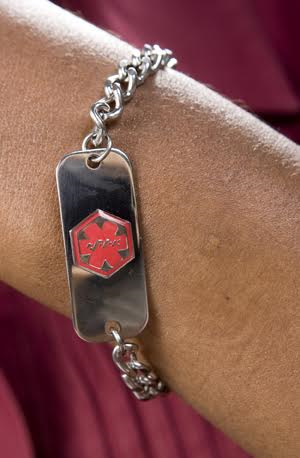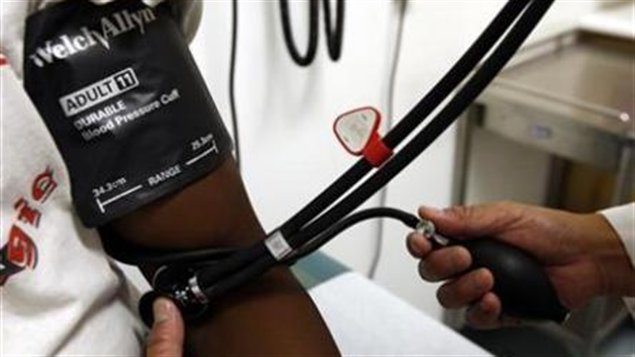
Before you start taking this medicine, be sure your doctor knows if you have any of these conditions:
- Stomach ulcer now or in the past
- Vomited blood or had bloody stools (black or red color)
- Aneurysm, pericarditis, or pericardial effusion
- Blood disorder
- Recent surgery, stroke, mini-stroke, or spinal puncture
- Kidney or liver disease, uncontrolled high blood pressure, diabetes, vasculitis, congestive heart failure, lupus or other collagen-vascular disease, or high cholesterol
- You are pregnant or breastfeeding
- You are younger than 18 years old
- Recent or planned dental procedure
Although warfarin reduces the risk for blood clots, it increases your risk of bleeding. Because of this, you must take the medicine exactly as you are told by your health care provider.
You will have blood tests often to check how you blood is clotting. Make sure you keep all scheduled appointments for blood testing. If you don’t, you will be at risk for bleeding problems. You also need to protect yourself from injury that may cause bleeding such as a fall or hitting your head.
Follow these tips
- Take this medicine at the same time each day. Take it with a full glass of water, with or without food.
- Make sure you know what to do if you miss a dose. If you are not sure what to do, call your health care provider or pharmacist. Do not take more warfarin than you were told to.
- Be sure to tell all of your providers including your dentist that you take warfarin. If you will be taking warfarin for quite a while, carry an ID card or get a Medic-Alert bracelet. This will alert medical staff in case you aren’t able to do so yourself. Also carry with you the name and number of the person to contact in case of an emergency.
- Keep your appointments for regular blood tests to measure the effects of warfarin. Your health care provider may need to change your dose based on the results of your blood test. Follow your doctor’s advice exactly about how to take this medicine.
- Do not stop taking the medicine without talking with your doctor.
Monitoring your PT/INR blood levels
You will need to have a blood test called a PT/INR regularly. The PT/INR blood test is done to make sure you are getting the right dose of this medicine. The PT/INR test tells your health care provider how your blood is clotting. Prothrombin time, commonly referred to as pro time or PT, measures the time it takes for blood to clot. International normalized ratio or INR is a way to compare results of the PT tests done at different labs.
· Go for your blood (PT/INR) tests as often as directed. Note that diet and medicines can affect your PT/INR level.
· Your INR was between _____ and _____ .
· Ask your health care provider what your goal INR is. Your goal INR is between _____ and _____.
· Your next PT/INR blood draw is due on _________________ (date) at ________________ (time) by ____________________ (name of health care provider or clinic).
· The name of the health care provider who is monitoring your anticoagulation therapy is ______________________ and the phone number is ___________________.
· Follow up with your health care provider or as advised by his or her staff. It usually takes a few hours for your doctor to get the results of your clotting tests. Call to get your lab results and find out if your doctor needs to make further changes to your warfarin dose.
· If your labs (PT/INR) are drawn at a location other than your doctor's office, remember to tell your doctor as soon as you get your lab results.
What to do at home
1. Adjust your warfarin dose as directed by your health care provider, ____________________ (name of health care provider).
2. Have your blood clotting test done every _______ days at _____________________ (name of clinic) by ____________________ (name of health care provider).
3. Prevent injuries and bleeding:
o Do not go barefoot. Always wear shoes.
o Do not trim corns or calluses yourself.
o Use an electric razor to shave instead of a manual one.
o Use a soft-bristled toothbrush and waxed dental floss.
4. Some medicines can affect your blood clotting. Always talk with your health care provider before stopping, starting, or changing any prescription or over-the-counter (OTC) medicines. This includes herbal medicines and vitamins. Talk with your health care provider about the following medicines:
o Some antibiotics. This is critical because some common antibiotics can cause severe bleeding if you take them along with warfarin. These antibiotics include ciprofloxacin and trimethoprim-sulfamethoxazole.
o Some heart medicines
o Cimetidine
o Aspirin or other anti-inflammatory drugs, such as ibuprofen, naproxen, ketoprofen, or other arthritis medicines
o Some drugs for depression, cancer, HIV (protease inhibitors), diabetes, seizures, gout, high cholesterol, or thyroid replacement
o Vitamins containing Vitamin K
o Herbal products such as ginkgo, Q10, garlic, or St. John's wort
5. Avoid major changes in your diet.
Keep your diet steady
Keep your diet pretty much the same each day. That’s because many foods contain vitamin K. Vitamin K helps your blood clot. So eating foods that contain vitamin K can affect the way warfarin works. You don’t need to avoid foods that have vitamin K. But you do need to keep the amount of them you eat steady (about the same day to day). If you change your diet for any reason, such as for illness or to lose weight, be sure to tell your doctor.
- Examples of foods high in vitamin K are asparagus, avocado, broccoli, cabbage, kale, spinach, and some other leafy green vegetables. Oils such as soybean, canola, and olive oils are also high in vitamin K.
- Other food products can affect the way warfarin works in your body:
- Food products that may affect blood clotting include cranberries and cranberry juice, fish oil supplements, garlic, ginger, licorice, and turmeric.
- Herbs used in herbal teas or supplements can also affect blood clotting. Keep the amount of herbal teas and supplements you use steady.
- Alcohol can increase the effect of warfarin in your body.
Talk with your health care provider if you have concerns about these or other food products and their effects on warfarin.
When to call your health care provider
Warfarin increases your risk of bleeding. Call your health care provider right away before you take your next dose of warfarin if you have any of these problems:
- Bleeding that doesn’t stop in 10 minutes. This might be from a bloody nose or a cut, for example.
- A heavier-than-normal period or bleeding between periods
- Coughing or throwing up blood or something that looks like coffee grounds
- Nausea, bloating, or diarrhea
- Bleeding hemorrhoids
- Dark red or brown urine
- Red or black tarry stools
- Red or black-and-blue marks on the skin that get larger
- A fever or an illness that gets worse
- Dizziness, headache, weakness, or fatigue
- Chest pain or trouble breathing
- A serious fall or a blow to the head
- Swelling or pain after an injury or at an injection site
- Bleeding gums after brushing your teeth
What to watch for
If you have any of the following allergic reactions, call your doctor right away or go to the hospital.
- Rash
- Itching
- Swelling
- Trouble swallowing or breathing

 RSS Feed
RSS Feed









